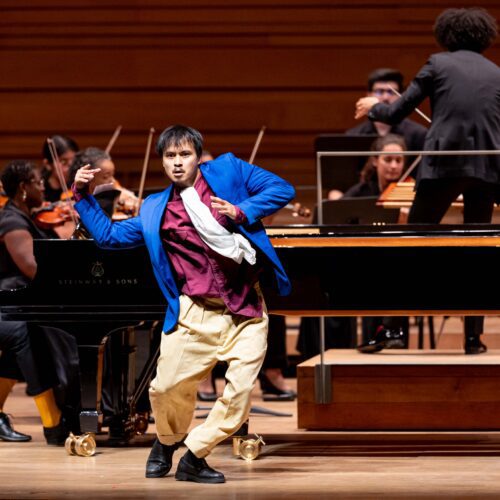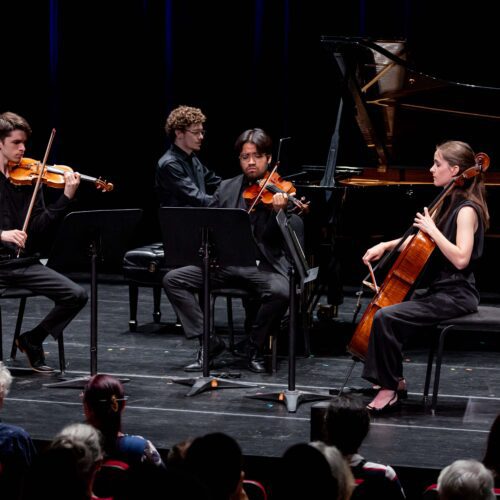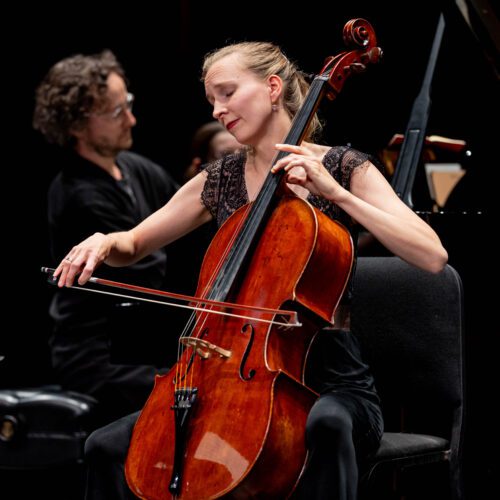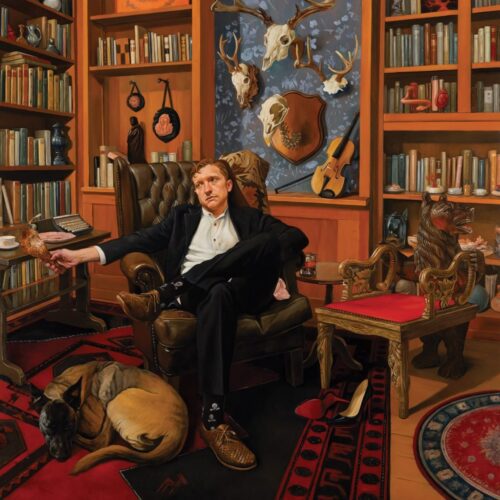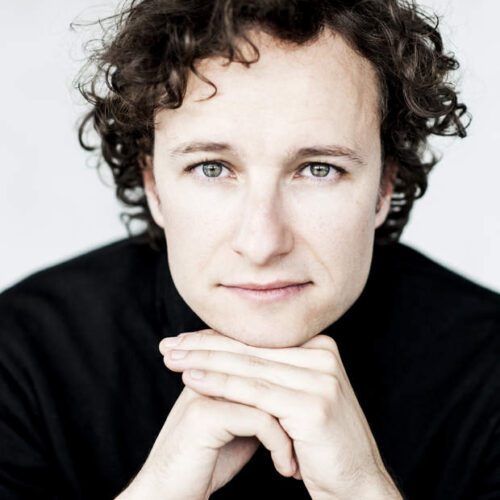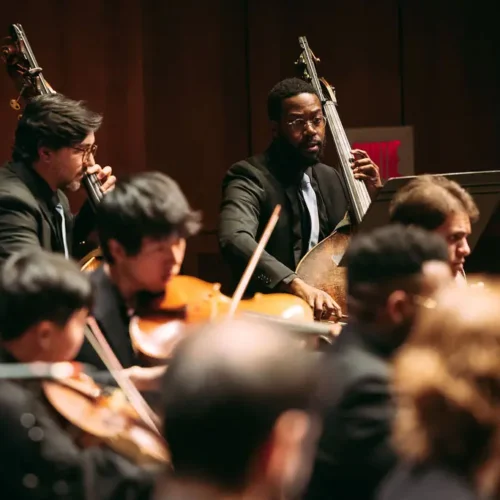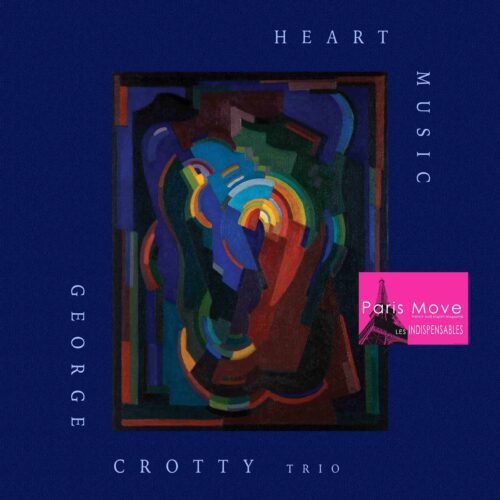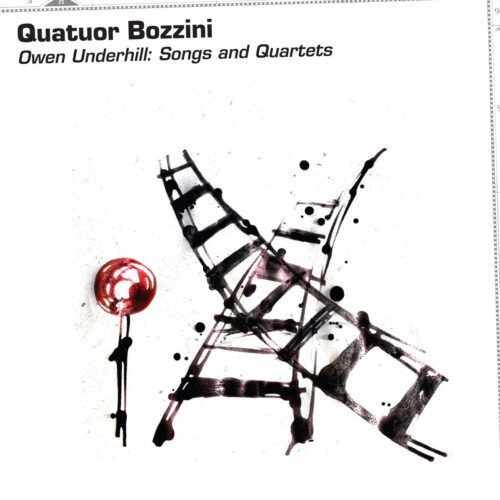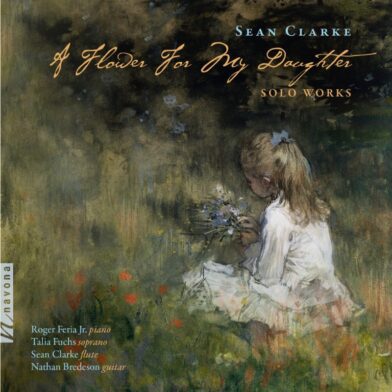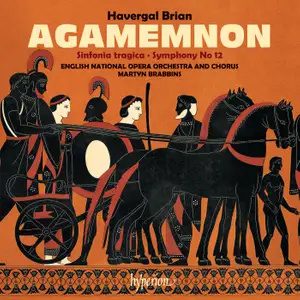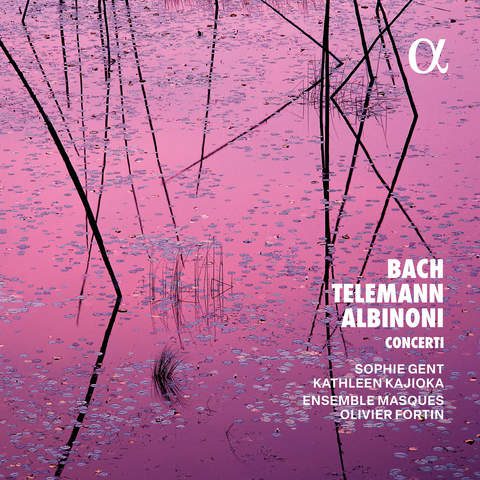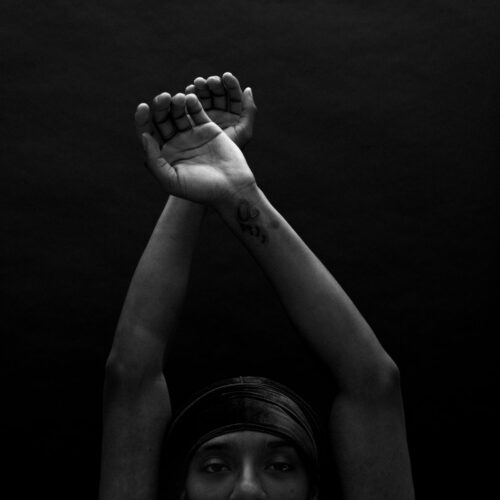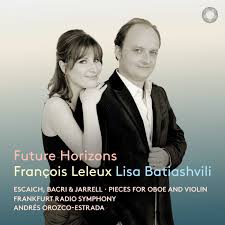The Obiora ensemble, a classical orchestra made up of musicians from diversity, was on the stage of the Maison symphonique yesterday afternoon, for an attractive program, marked “for the whole family.” And the whole family was there, especially the little ones who squirm and whisper. It makes me happy to witness these kind of events, and I recommend parents not to scold their kids too much when they move a little in their seats. That’s what those concerts are for! Don’t make them feel too much that the concert is a constraint. In short, there was some chirping (a little), but it was quite alright.
WATCH THE INTERVIEW WITH ALLISON MIGEON FROM OBIORA ABOUT THIS CONCERT (in French)
The program, conducted by Rafael Payare, began with a very pretty four-movement string piece by African-American Quinn Mason, Irish Dance Suite, illustrated by Kanyen’kehà:ka (Mohawk) artist Kaiatanoron Dumoulin Bush. Each of the four movements was accompanied by an illustration constructed live on the big screen by the young lady. We wondered a bit where it was going, because the abstract lines drawn all looked alike, but in slightly different configurations. It looked like braids of hair intertwined with leaves. It was only at the very end that the complete design, bringing all the parts together, allowed one to perceive a sort of Celtic symbol (it seems to me), constructed with plant motifs. Very pretty, but a little difficult to follow for very young children. Mason’s music is of the very popular pleasure type, with frank melodies, graceful rhythms, fortunately not too heavy on the cliché side. A piece that is certainly very successful with youth string orchestras.
The Carnival of the Animals, which everyone was eagerly anticipating, also received unprecedented support. And it was the latter that completely stole the show and won over the fairly large audience. The choreographer Charles Brécard, that I would qualify as Fluid Man, so smooth are his movements, almost liquid, illustrated each movement of Camille Saint-Saëns’ masterpiece with as much humour as originality. He mostly avoided “mimicking” the creatures of the score. Oh, there was an elephant’s trunk suggested with a handkerchief and swan wings, but Brécard mostly characterised other aspects of the music. The rhythms, for example, on which (Fossils et Finale) he crossed contemporary dance, hip hop and street dance. Some of the pieces could easily be seen at the JOAT street dance festival, which takes place in Montreal at the end of August. He also got the whole crowd involved, without a word, in the famous Aquarium (fish) with undulating hand movements that you might see at pop concerts. Elsewhere the artist would collapse like a rag, fall gracefully off the stage and try to get back on, or roll around on the floor. The children loved it, the parents did too, and even people who don’t usually like dance very much (I know some) thought it was very successful.
Charles Brécard should tour with this concept. I can easily see any orchestra in the world attracting a family audience with this, and give an interesting alternative to the usual narrated version.

